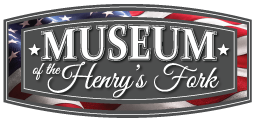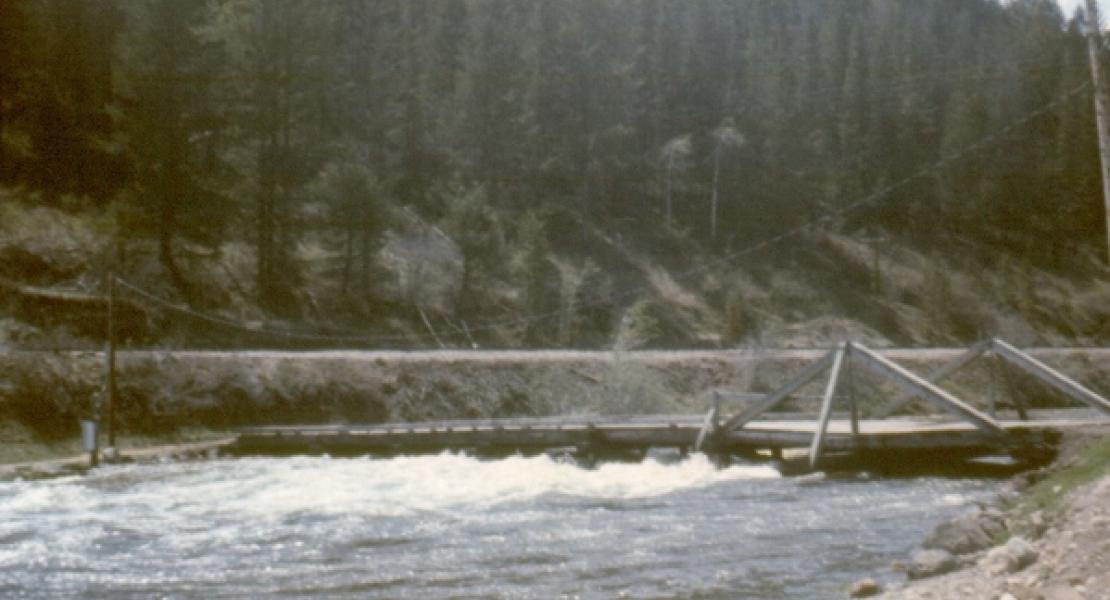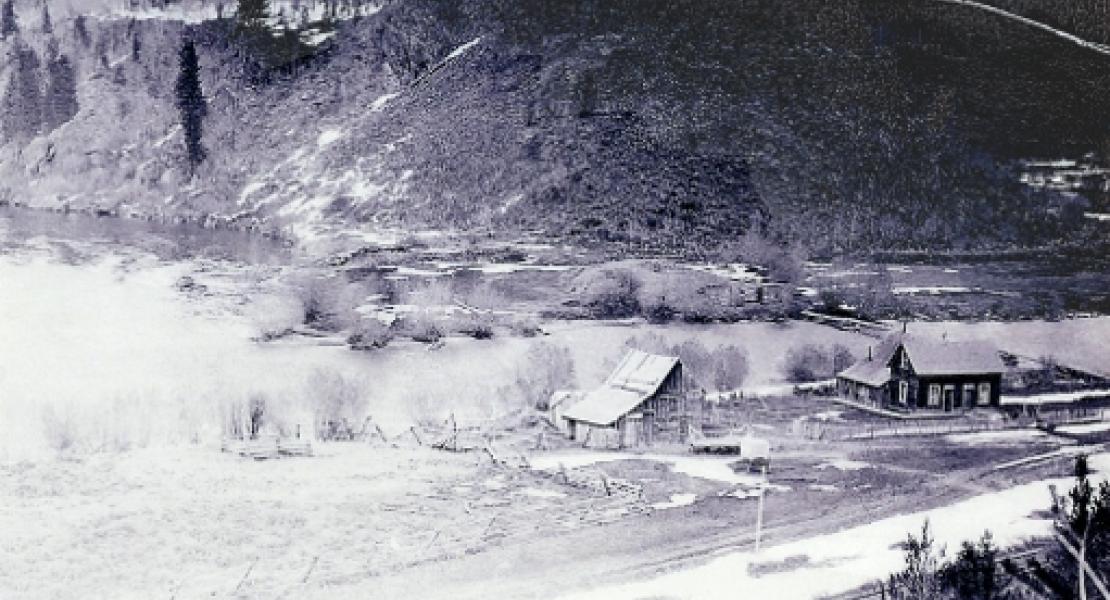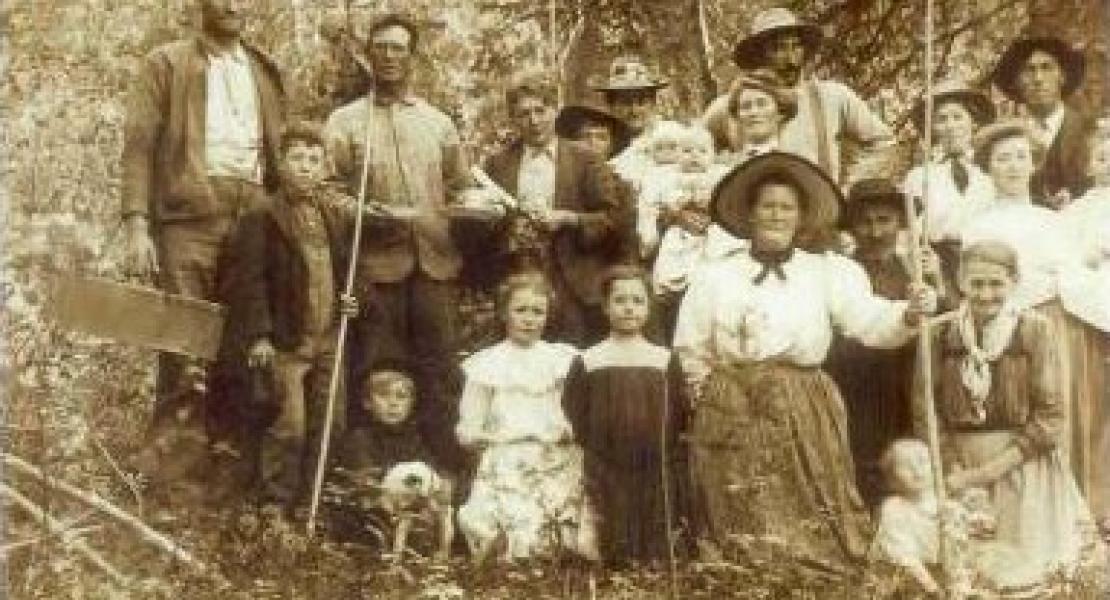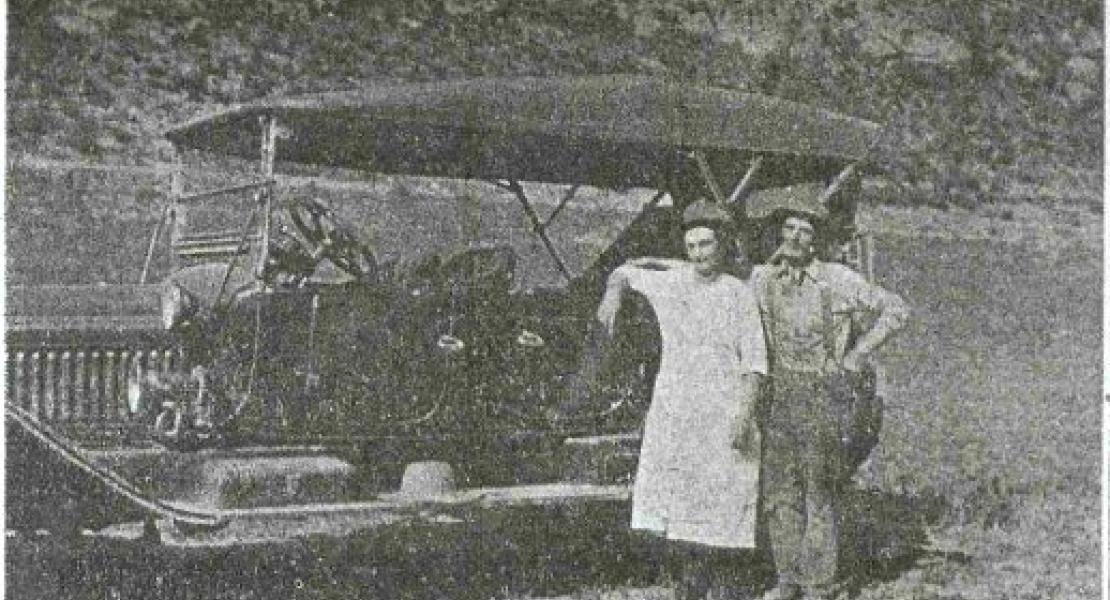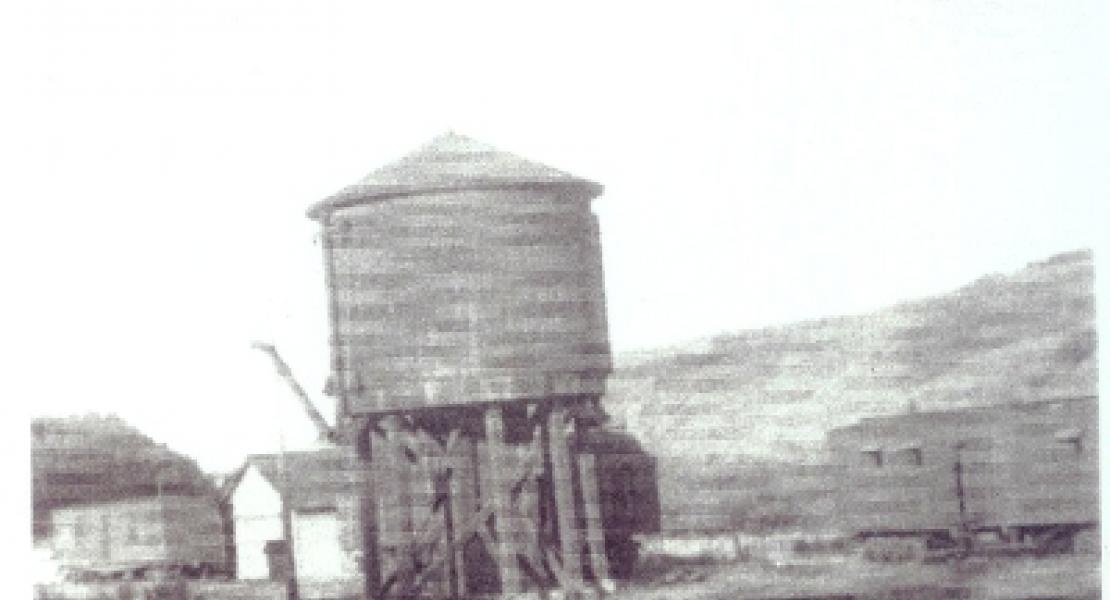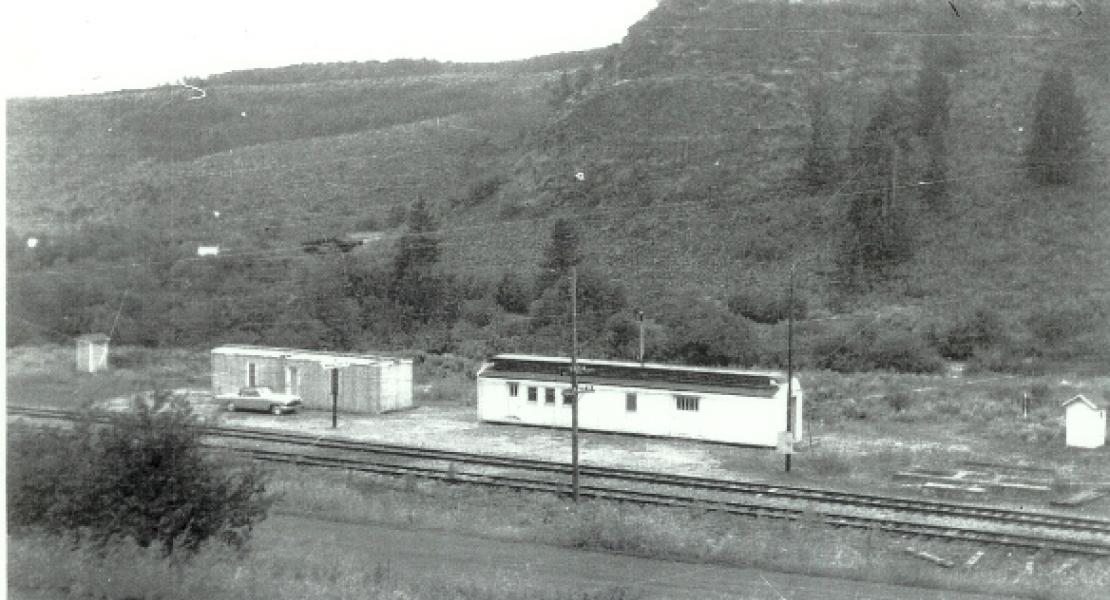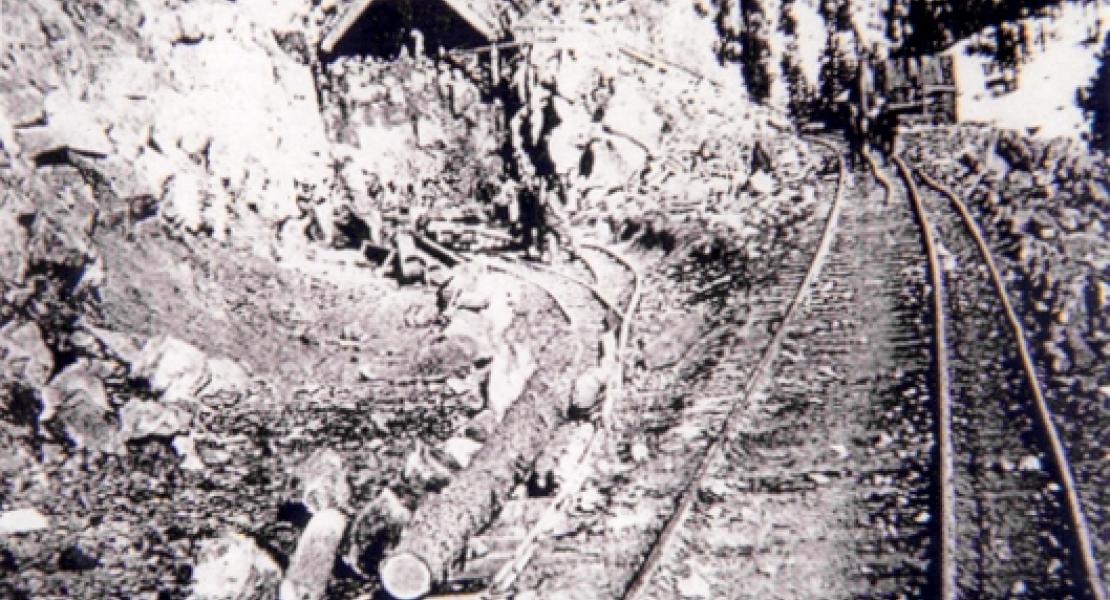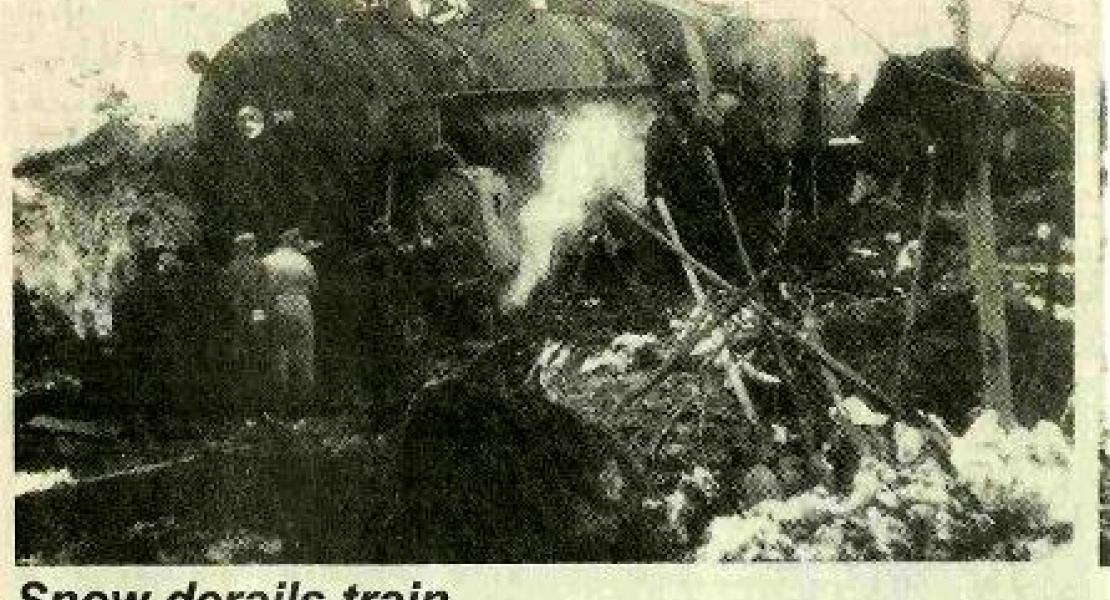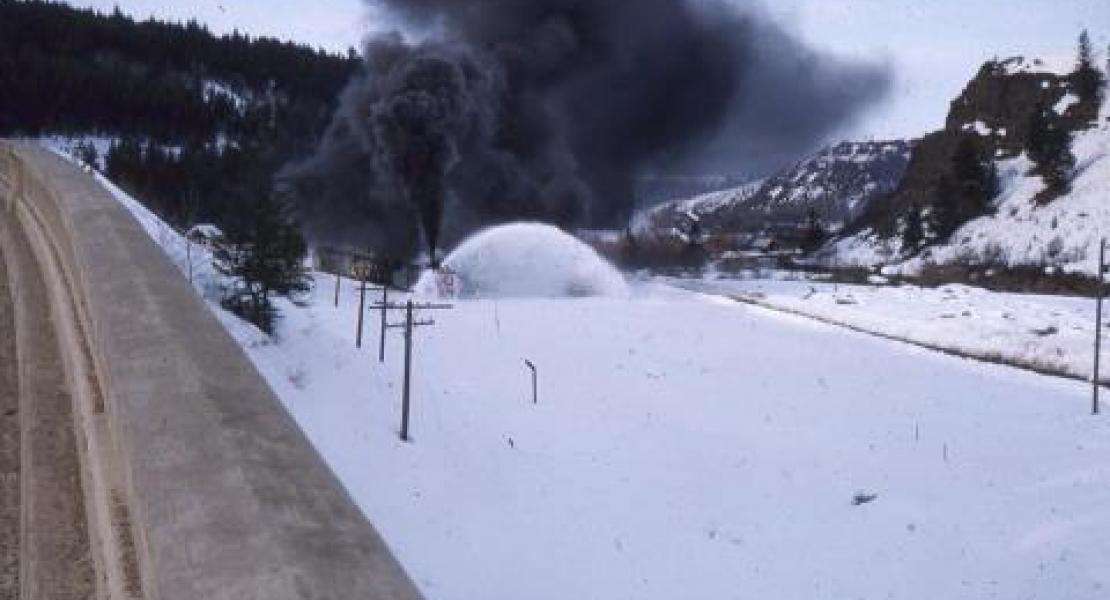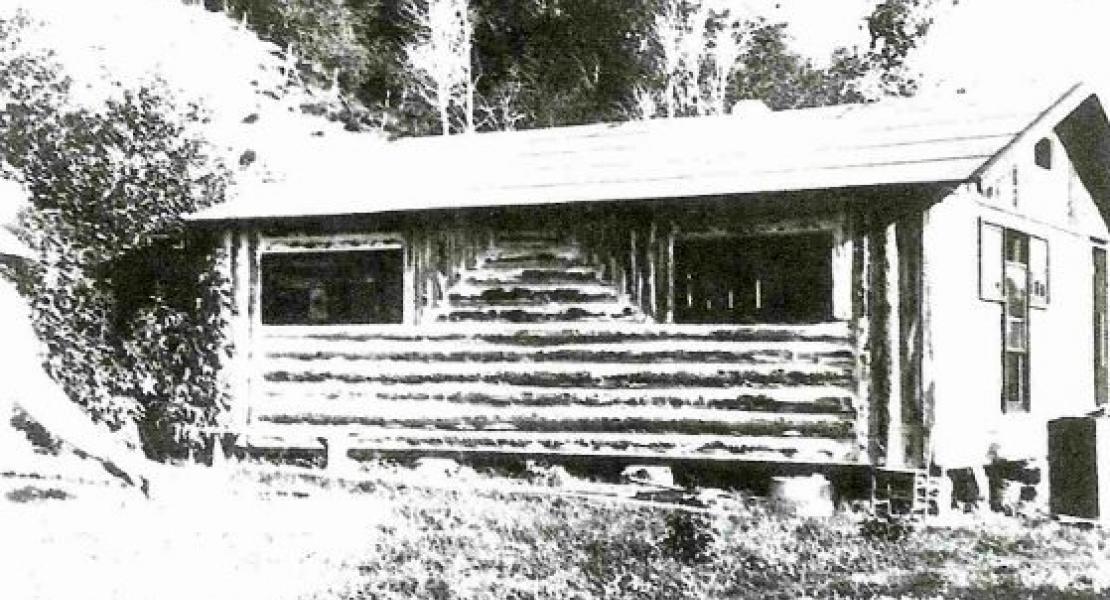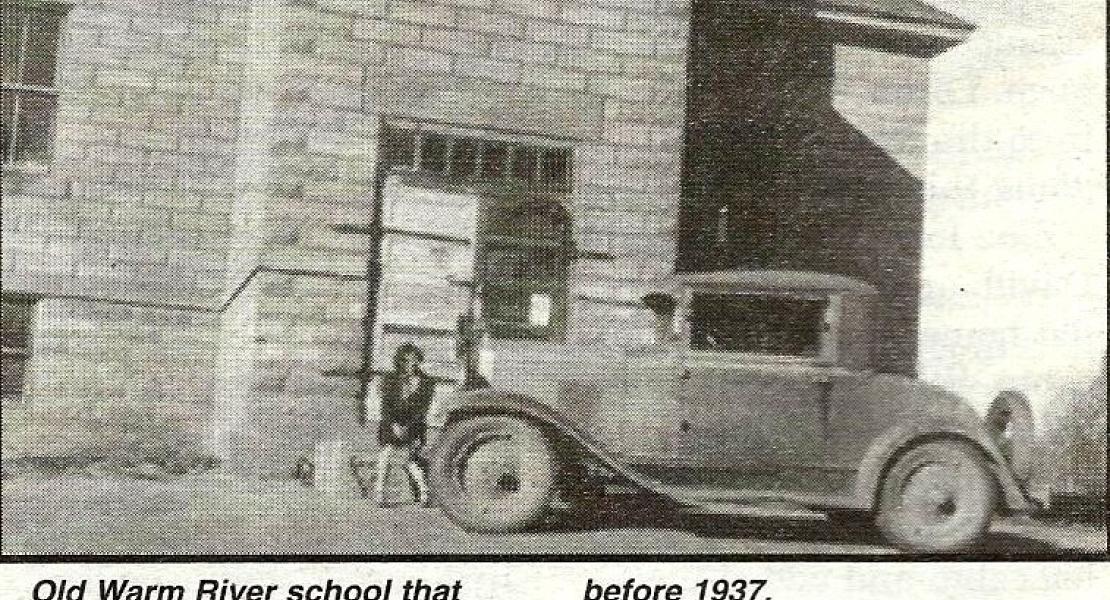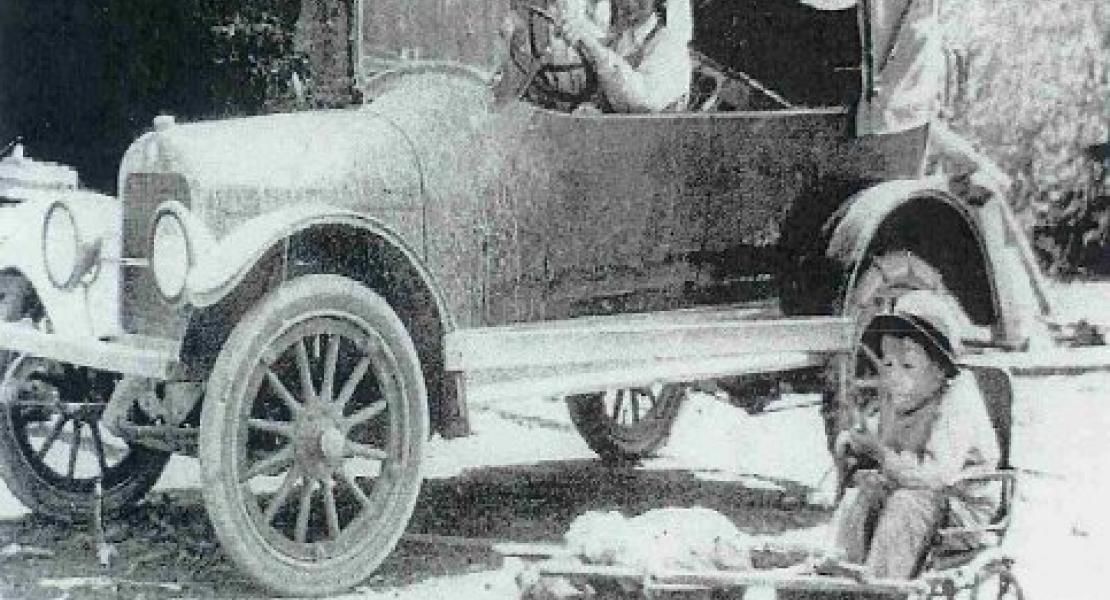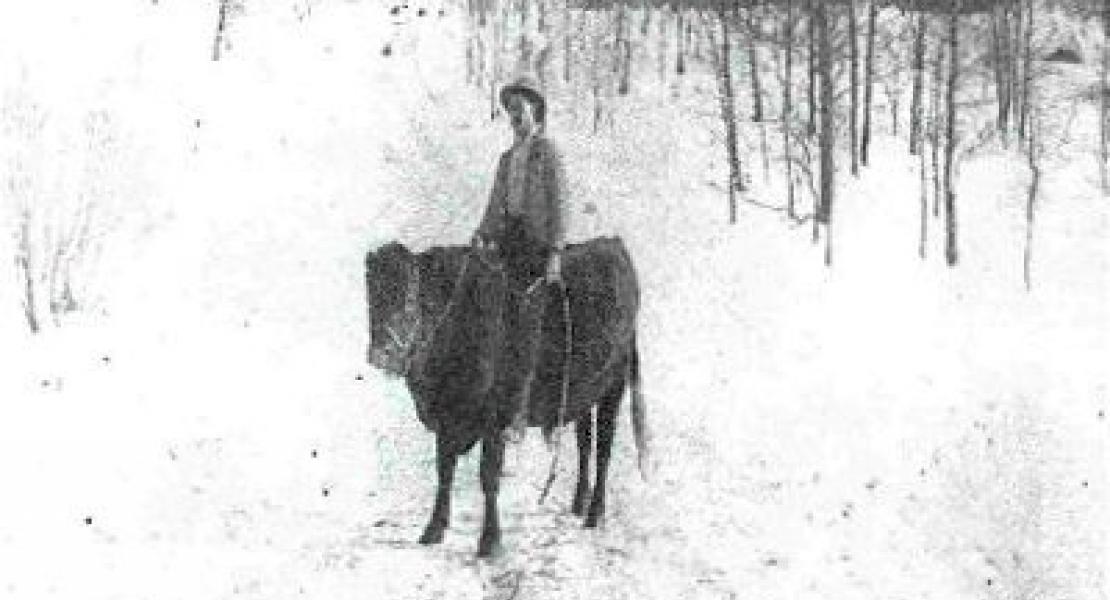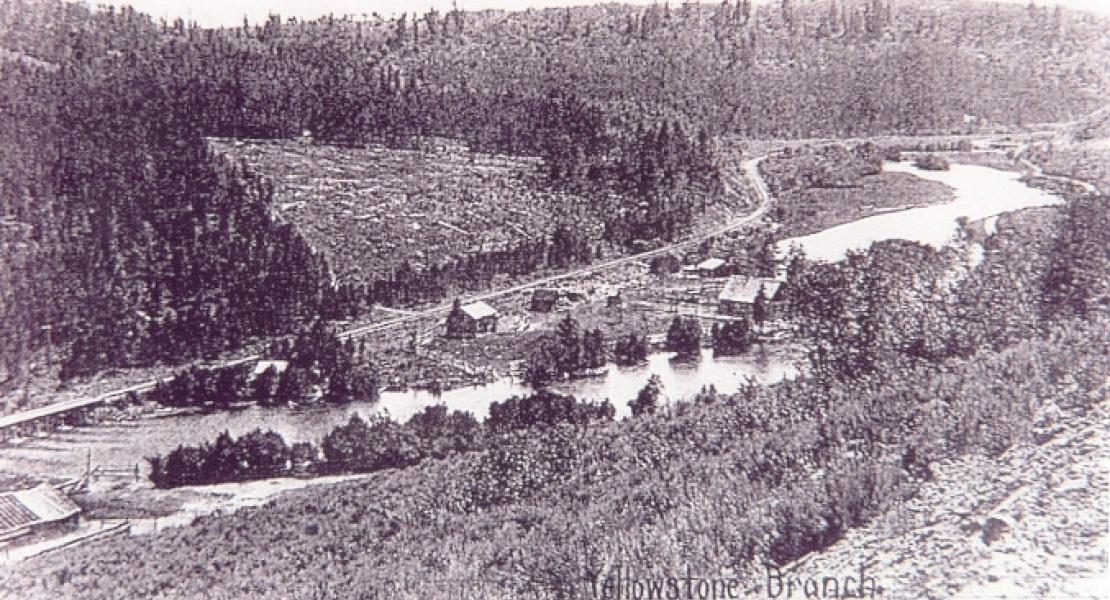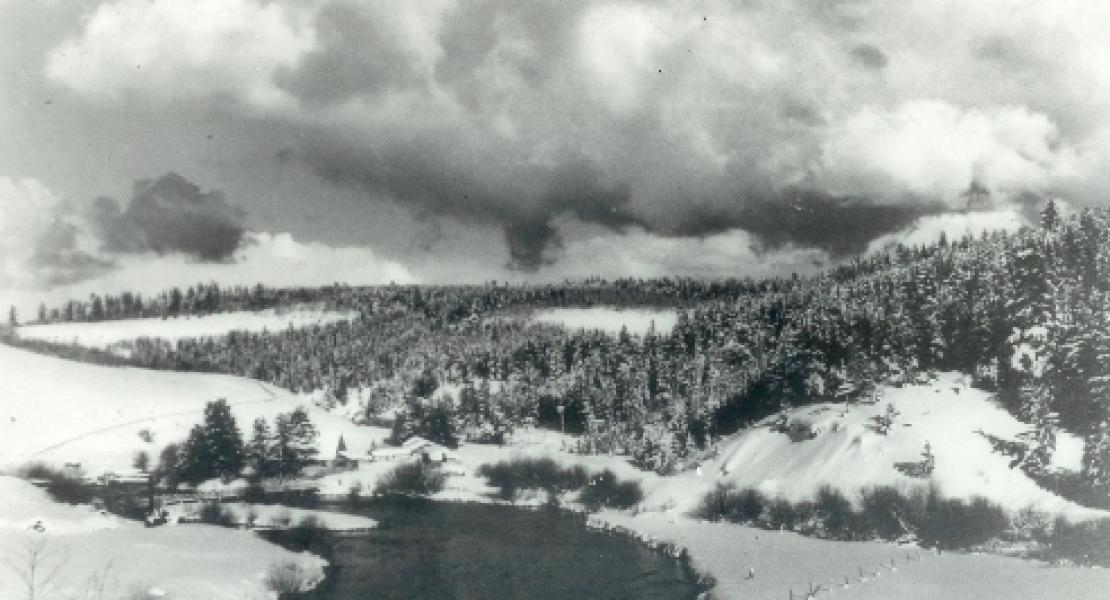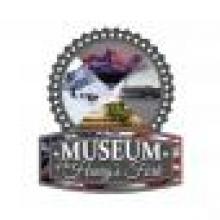The first written account of traveling through the Warm River area was published in the Deseret News in Salt Lake City in August of 1890.
The party consisted of Dr. J.R. Park president of the Deseret University, Harry Squires, the artist, Milando Pratt, and his daughter, Miss Viola Pratt, and B.W. Driggs, Jr.
The party left from Marysville (then known as Springville). "We found an old trappers trail leading from up the Warm River, or "Mormon Mule River" as it is sometimes called. The trail is very dim and leads up to near the vicinity of the Vioia Falls (Mesa Falls) on the Snake River. We were told these falls were worth spending a day to see; but it being a wild country, without roads, very few people ever visit them. We camped on the Warm River, after following its winding course half a day, and found it one of the best places for fishing in our experience.
Ward Reynolds wrote a recollection of the road before the railroad came, stating; The original road started where the stone arch bridge is now on top of the canyon at the Howell Ranch, the road headed north straight off the canyon to the Walker flat. From there it followed the river to the junction of Warm River and the Snake, then east up Warm River, fording Robinson Creek and Warm River right where the Fred Lewies Cafe was established.
The road then followed Warm River to Keppner's flat, forded the river again, then went straight east, out of the canyon. Form her it stayed on the ridge east of Warm River until it was above Warm River rapids, possibly 2 miles above Bear Gulch. Here a dugway went back down into the canyon, across the river again, thence west into the Warm River meadow country (Garrett Meadows).
One of the first settlers in the Warm River area was Bimlick and Josephine Stone who had arrived from England in 1896. The Carter, Egbert, Howell, and Walker families and others built log cabins and settled in the bottom of the canyon near the river and creeks that made water easily available.
The earliest road to Island Park and Mesa Falls ran through the area. The first dugways down and out of the canyon proved hard to maintain as the soils were clay and tended to erode and slide when saturated with water. An old stone bridge can be seen as one drops into the canyon, and after being down at the bottom, one can look up through the lodgepole pine and see the large rock walls that sheltered the first dirt and gravel roadway that horse and wagons, stages and coaches provided transportation to tourists traveling to Yellowstone Park.
The coming of the tracks for the Oregon Short Line Railroad in 1907 brought life to the canyon area eight miles east of Ashton. The railroad's main purpose for the Warm River siding was a 60-foot steel turntable in a concrete pit, built in 1908 on the west side of the tracks. The turntable was used to turn around the additional locomotives that had to be added on to the trains to push the load up to the top of Rees Pass in Island Park.
The stock pens built in 1911 were to the south of the turntable, and there was also a passing track on the east side. In 1930 the railroad listed Warm River as having a two pen stockyard with a capacity of 9 head of livestock on the loading deck. The stockyard was no longer being listed by 1946.
There was a pump house that supplied water from the river built in 1907. The standard 24' diameter 50,000-gallon wooden water tank was built in 1907 on a concrete foundation. By 1946 this water tank had been removed, since the locomotives were working out of Ashton.
Many will remember an old passenger car and a boxcar set off of the tracks on a foundation and used by the section crews. They were burned down shortly before the line was removed in 1978.
In May of 1906, The Idaho State game warden was on the lookout for Japanese railroad laborers dynamiting fish in the local rivers. Six laborers were caught at the confluence of the Snake and Warm rivers. All six jumped in the river to swim to the other side to escape the law, but three drowned with only two bodies ever being recovered downriver. Their names were, H. Ishii, S. Makita, and S. Matsu. Two of the bodies are buried in the southwest corner of the Pineview Cemetery east of Ashton.
A contract was let in 1920 to reconstruct the road dugway going down into Warm River and constructing a new bridge at the bottom. Otto Lobnutz was said to be the contractor, moving large amounts of soil and hillside to provide a stable roadway that was prone to sliding.
Zina Iowa Gunter had recently married David Taylor Howell, and expressed her concern about living by the newly laid tracks, as many laborers, hobos and transients walked the rails. David had filed a homestead on some good farm ground on top on the south side of the canyon in 1905 and was in hopes of building a home on the property when a well could be drilled.
Early farm families on the north side of the river were George and Willis Hibbard, Eli Kirkham, G.S. Arnold, David Levi Stone, Marvin Jones, and later Lavar Cherry. In the late 30's E.L. "Doc" Hargis began buying larger tracts of land on the north side, sometimes by buying land for back taxes or from financial institutions that had foreclosed on the previous owner. Doc's brother Daws and his son Lou did the farming and ran cattle in the area.
Farms on the south side of the canyon were David Taylor Howell, his brother William Preston Howell and their brother in law Lorin Walker and his brother Charles Oakland Walker. It was very common in the early days that the farmers would put in their crops and then drive coaches for the Yellowstone Park companies through the summer until the crops ripened and harvest began. Others on the south side were Max Marotz, Otto Lenz, Harry Hudson, Owens, Sheppard, Joe and Henry Reimann.
Keppner Property
The Keppner family who's large log home eventually became the Ranch House, owned land on the upper east side of Warm River. Ralph Stephens purchased his ranch in the Fish Creek area from Joseph Hollis Egbert and several others in about 1918. Small fields can still be seen in the upper areas, but acidic pine soil was more predominant and was poor and lent itself to pasture land better than farming.
A post office in Warm River is listed as being from 1909 to 1924 with Adolph Adair as the postmaster. Family members say that the Adair home possibly sat in the right-of-way when the train came through and was possibly destroyed at that time. Many early post offices were run out of the postmaster's home. A post office is shown in the Greentimber area in 1906 with John Albert George as the postmaster. It was closed in 1912 with the mail being then delivered to Warm River.
In 1909 an LDS Ward was created in Warm River with Samuel P. Egbert as presiding elder. In 1912 Bishop George A. Hibbard and his councilor Eli Kirkham were released and David Taylor Howell was set apart as bishop along with his counselor Axel Anderson.
In 1914 David Howell was released as Bishop and George Hibbard was appointed as Presiding Elder as the Ward was downgraded to a Branch. It is said that the church meetings were held in the schoolhouse. Records show that there were 23 families and 103 souls in the Ward.
The Warm River Sunday school Bible class show records through to July 27th, 1930 in the record book found in the Hess Heritage Museum. Over the years of 1923 to 1930, enrollment ranged from 25 to 45 children, with about ¾ that amount attending any given Sunday.
